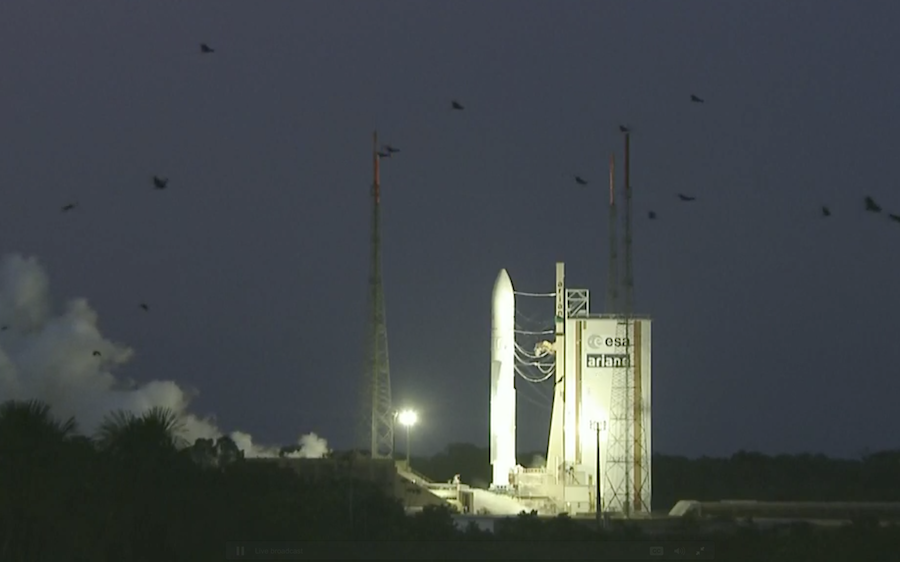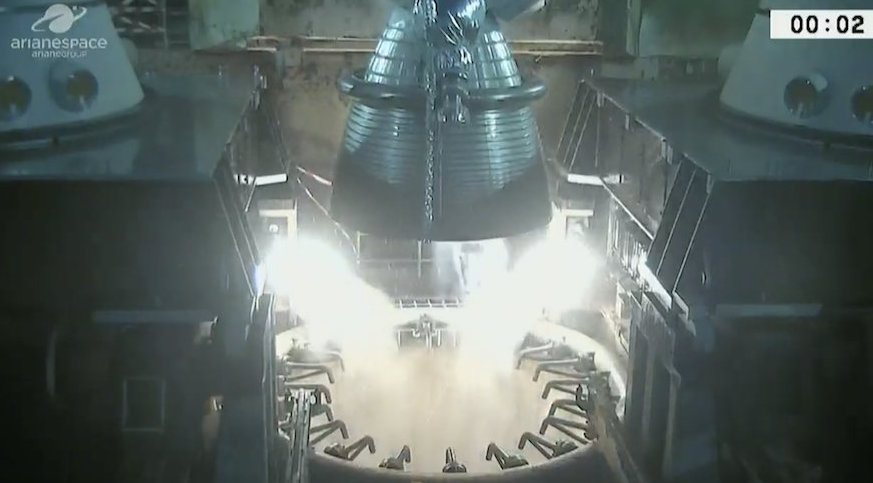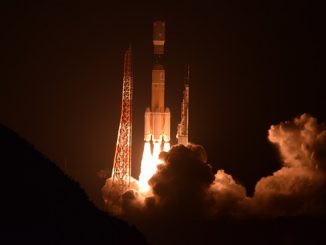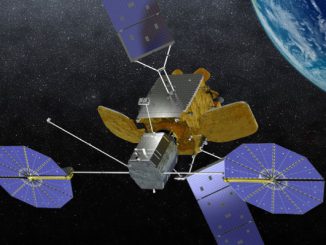
An Ariane 5 countdown in French Guiana was aborted Tuesday with the European-made rocket’s main engine already running, postponing the launch of two commercial communications satellites until engineers can resolve the problem.
The rare last-second abort came at 2151 GMT (5:51 p.m. EDT; 6:51 p.m. French Guiana time) Tuesday as the Ariane 5’s Vulcain 2 main engine, a cryogenic powerplant consuming super-cold liquid hydrogen and liquid oxygen, throttled up to full power.
Seven seconds were supposed to elapse before ignition of the Ariane 5’s two powerful side-mounted solid rocket boosters, an irreversible command that would have propelled the rocket airborne.
A computer-run health check into the readiness of the Vulcain 2 engine apparently turned up a problem, and the countdown was halted before the strap-on boosters fired.
It was the first time since March 2011 an Ariane 5 countdown was aborted after main engine start. On that mission, engineers replaced suspect actuators inside the Vulcain 2 engine and successfully launched the Ariane 5 rocket around three weeks later.
Didier Faivre, director of the Guiana Space Center for CNES, the French space agency, said the abort was triggered by the Ariane 5’s computers.
“There was a problem with the Vulcain engine, and we proceeded with an automatic stop of the launcher,” Faivre said. “There is no danger on the base either for people or infrastructure.”
The Ariane 5 launcher and the Intelsat 37e and BSAT 4a communications satellites inside its payload shroud were reported safe after the abort by Luce Fabreguettes, Arianespace’s executive vice president of missions, operations and purchasing.
“We had an aborted launch,” she said. “Everything is fine. The launcher, the satellites are OK. We will be analyzing the problem to be able to launch again as soon as possible. I would, of course, like to apologize to our customers for this delay.”

Arianespace was gearing up for its ninth launch of the year, and the fifth using the Ariane 5 heavy-lifter.
“Data analysis is underway to determine the cause of the anomaly,” Arianespace said in a statement. “In parallel, the launcher will be transferred to the Final Assembly Building — where it will be returned to a flight-ready condition.”
The Ariane 5 will return to its assembly building, a cavernous structure 1.7 miles (2.7 kilometers) from the launch pad, for ground crews to reconnect umbilical lines between the rocket and its mobile platform. The umbilicals disconnected as planned in the final 10 seconds of the countdown, and they must be reinstalled manually.
The Intelsat 37e and BSAT 4a satellites will likely remain aboard the rocket during any repairs deemed necessary.
The 14,193-pound Intelsat 37e satellite, occupying the upper position in the Ariane 5’s dual-payload stack, will beam broadband, wireless communications, television and government services across the Americas, the Atlantic Ocean, Europe and the Middle East from a perch in geostationary orbit at 18 degrees west longitude. Made by Boeing in El Segundo, California, Intelsat 37e is the fifth Epic-series satellite launched for Intelsat.
BSAT 4a will provide HD, 4K and 8K Ultra HD television broadcasts over Japan for Broadcasting Satellite System Corp. The satellite was built by Space Systems/Loral in Palo Alto, California, and carries 24 Ku-band transponders.
Email the author.
Follow Stephen Clark on Twitter: @StephenClark1.



